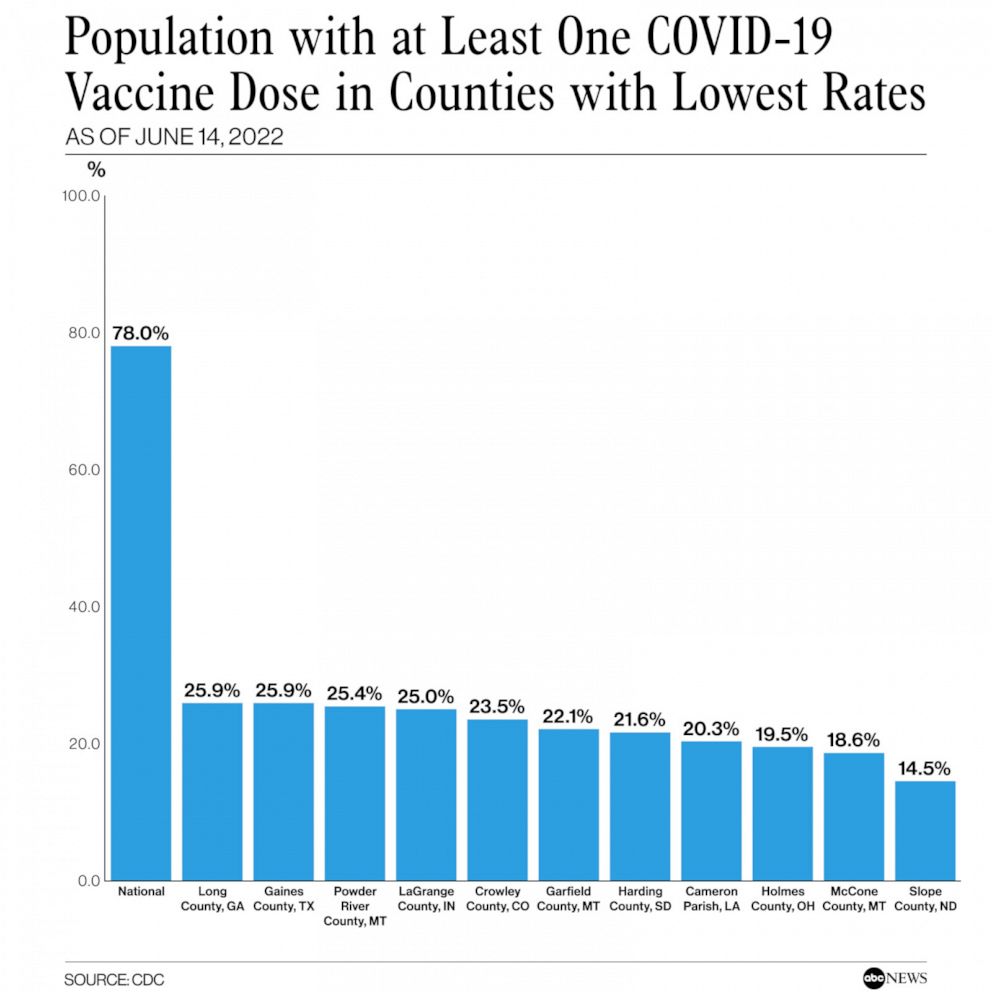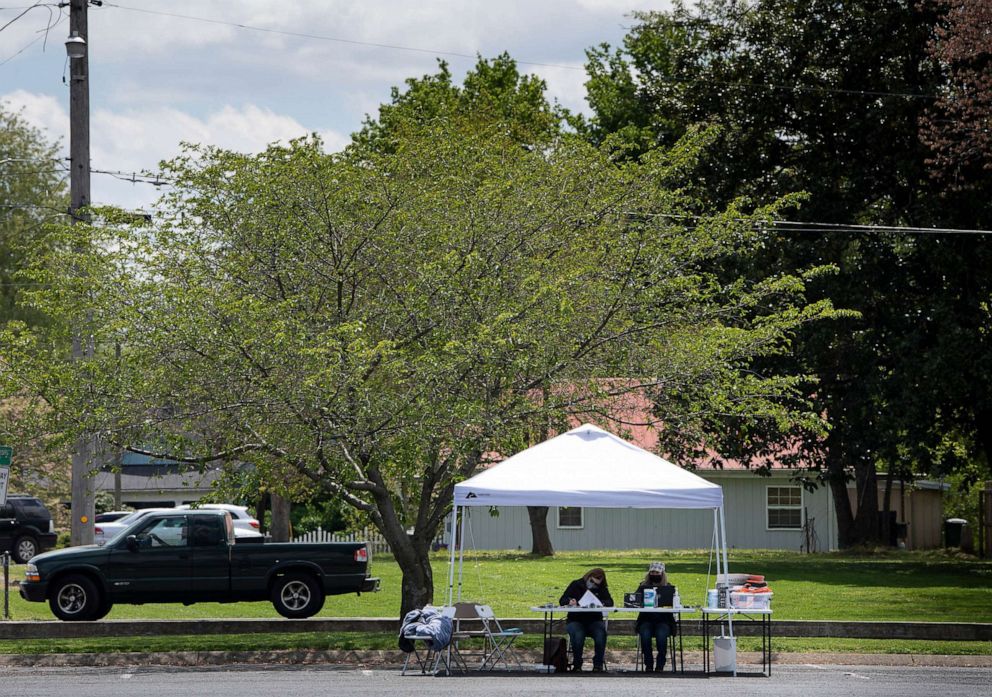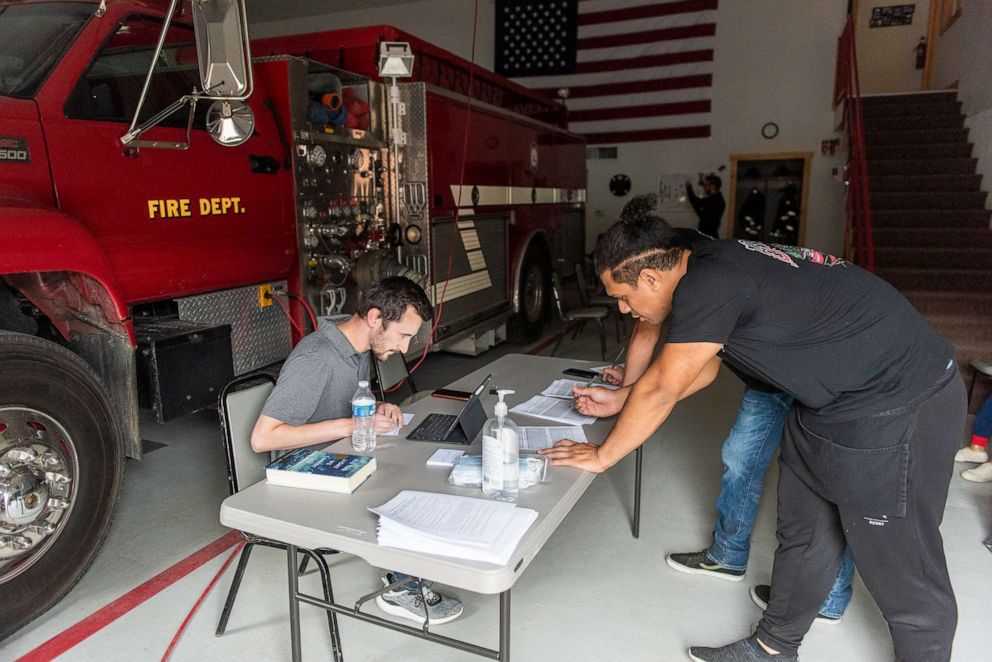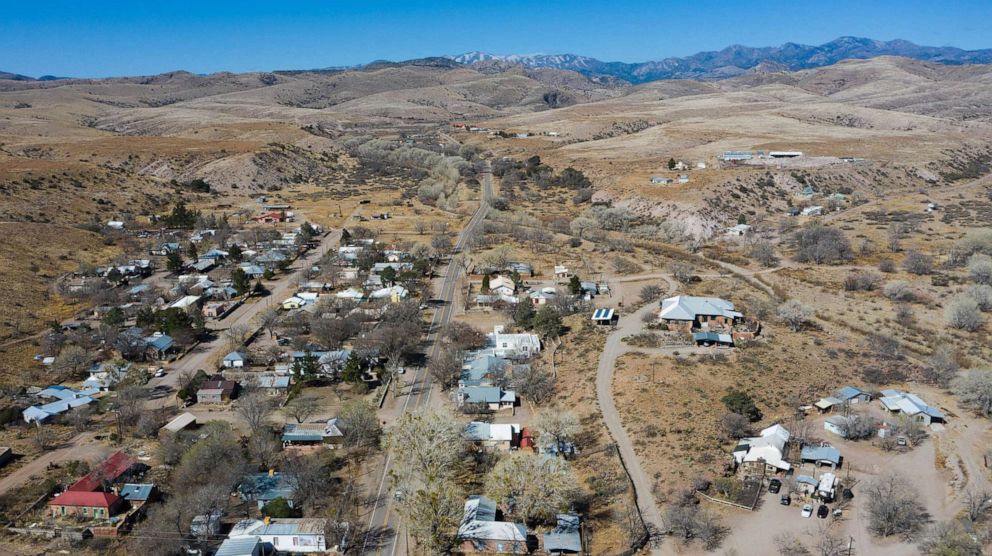Why some counties are still struggling to vaccinate residents against COVID-19
CDC data shows 24 counties have vaccinated fewer than 30% of their residents.
More than a year and a half since the first COVID-19 vaccines were rolled out -- at a record pace and with the promise of ending the worst public health crisis in a century -- several U.S. counties still have incredibly low rates of vaccination.
Inoculation against COVID and the pandemic at large have long been controversial issues in the U.S., but consistent public health campaigns have helped chip away at vaccine hesitance.
Still, despite having readily available safe and effective vaccines as well as booster doses, as of Wednesday, 24 counties in the U.S. have fewer than 30% of their populations with at least one dose against COVID-19, according to data from the Centers for Disease Control and Prevention. Seven counties are under 25%.
This is far below the national average of 78% of all Americans with at least one dose and nearly 69% fully vaccinated.
Counties with the lowest vaccination rates are scattered across the South, Midwest and Great Plains with five in North Dakota and three each in Texas and Montana.
The overwhelming majority of these counties are rural, further illuminating the rural-urban divide that has existed in the U.S. since the earliest days of the COVID vaccination campaign. A March 2022 CDC report showed 59% of rural residents were vaccinated with at least one dose as of January 2022 compared to 75% of urban residents.
Experts told ABC News rural residents are more distrustful of government and tend to believe they don't need to be vaccinated due to living far apart from others. They also tend to vote Republican, which is correlated with lower vaccination rates.

“Most of these places in rural America have very small populations," Dr. Neil Seghal, an assistant professor of health policy and management at the University of Maryland School of Public Health, told ABC News.
“And when you have small populations in these places, the majority align demographically with each other. So if the majority align with people who are opposed to vaccinations either due to misperception of risk or for ideological reasons, you expect to see what we're seeing now.”
A fraction of the average vaccine uptake in the US
In Powder River County, Montana -- with a population of about 1,600 that borders Wyoming to the south -- just 25.4% of residents have received at least one dose and 22.4% are fully vaccinated, CDC data shows.
Dr. Sean Hill, health officer for the county's public health department, told ABC News it has been frustrating to try and get residents to get vaccinated.
“We've had conversations with people that swear up and down that the vaccines were developed too quickly and that it was just the government's way of tracking you,” Hill said. “But you're not going to change people's opinion when they're the same ones that are carrying the brand new iPhone around that tracks you, everywhere you go.”
“The best you can do is educate the ones that are most vulnerable and hope that helps protect the people that the illness is going to devastate.”
Montana Gov. Greg Gianforte, a Republican, has encouraged vaccinated but has vehemently opposed mandates.
COVID-19 rates in the state increased 44% between March 2020 and December 2021, with minors making up the largest group of infections, according to Montana’s Department of Public Health and Human Services.
At the same time frame, 45 counties saw an increase in infections, while 12 saw a decrease.
However, Montana currently has a better seven-day rolling average of new COVID-19 cases than the U.S. as a whole at 184.5 per 100,000 compared to 216.7 per 100,000, CDC data shows.
Other counties with low vaccination rates did not respond to ABC News' requests for comment.
Republican counties are less likely to be vaccinated
“You have religious [reasons], you have cultural [reasons], some of them are political [reasons],” Hill said. “Powder River County is traditionally a very Republican community.”
More than 85% of the county voted for Donald Trump in the 2020 presidential election while only about 13% voted for Joe Biden, according to the Associated Press.
In fact, all 24 counties with under 30% of population having received at least one dose voted for Trump compared to Biden, in some cases by as much as 90%.
In December 2021, during “The History Tour” with Bill O’Reilly, the former president revealed that not only was he vaccinated, but he received a booster shot, which prompted boos from his supporters in Dallas. He’s also encouraged his supporters to get vaccinated against COVID-19.
“Rural communities tend to politically align with Trump, a factor that correlates with lower vaccination rates,” Dr. Italo Brown, an emergency medicine physician and a clinical instructor in social emergency medicine at Stanford Hospital, told ABC News.
Data has shown that Republicans are less likely to be vaccinated than Democrats.

According to the Kaiser Family Foundation COVID-19 Vaccine Monitor from May 2022, over half -- 56% -- of unvaccinated adults said they identify as Republican or lean Republican. Previous surveys from KFF have shown that reasons for not being vaccinated included believing the media exaggerates how serious the pandemic is and that getting vaccinated is a personal choice.
“When you look at these areas, they're often rural, they're often poor, they're often conservative areas,” Dr. Perry Halkitis, dean of Rutgers School of Public Health, told ABC News. ”They're often lodged in states where there's been less-than-ideal messaging around vaccinations and there is a guard up against trusting the vaccine.”
CDC data shows suburban and urban conservative areas have fared better with vaccination.
In Oklahoma County -- the most populous county in the state, which Oklahoma City is located and which voted for Trump in 2020 -- 83.4% of residents have had at least one vaccine dose. And in El Paso County in Colorado, where Colorado Springs is located and also voted for Trump -- 75.1% of residents have had at least one dose.
A recent paper published in the journal Health Affairs this month, co-written by Seghal, looked at the association between COVID-19 mortality and the county-level partisan divide in the U.S.
The study found that in counties where 70% or more voted Republican in the 2020 presidential election, there were more than 70 additional deaths per 100,000 people compared to counties that vote Democratically.
“We see the impact of red Americans on COVID outcomes,” Seghal said. “Rural, sparser places are more entrenched ideologically dead In their beliefs against covert actions.”
Rural areas feel they are not at risk
Experts say another reason people in these counties may not haven’t gotten vaccinated is because they live so far apart from others that they don’t feel they are at risk.
“You take a county that's 3,300 square miles with a population of 1,600, that alone creates a population that's hesitant to accept anything,” Hill, the Powder River County, Montana public health official, said. “There's families in our community that live 50 miles, 75 miles from anybody else, so they don't necessarily see the benefit in the vaccine because they're never around anybody.”
Although studies have shown that the odds of indoor COVID-19 transmission are much higher than outdoor transmission, this doesn’t mean rural residents are not at risk.
“People who live in rural areas are going to go to the grocery store and they're going to go to, the pharmacy … and now all of these places are very high-risk,” Dr. Julia Raifman, an assistant professor of health law, policy and management at Boston University School of Public Health, told ABC News. “They’re crowded indoor settings where people are not wearing masks.”
She continued, “There's a very good chance that someone there has COVID-19 and if they are not vaccinated, there's a very high chance they could suffer a severe outcome, but the vaccine will protect them.”

Raifman added that if rural Americans suffer a severe case of COVID-19, it will likely be much harder for them to access care -- such as visiting a doctor or going to the hospital -- than someone in an urban area.
“We really want people to have some sense of urgency about protecting themselves,” she said. “It’s still quite a severe virus and people can die.”
How to increase vaccination rates in rural areas
Experts said that when people in rural areas get vaccinated against COVID-19, there’s often a stigma attached to their decision.
It’s why Hill said his 16-year-old daughter -- who attends a school in nearby Madison County, where the family lives -- did not tell anyone at her school she was vaccinated.
“Madison County is a very small community of ranchers and farmers … she just didn't feel like she was comfortable telling anybody she was vaccinated because there's a stigma in these communities, that you’re drinking the Kool Aid, that you're buying into the system, that sort of thing,” he said.

So how can leaders fight stigma and increase vaccination rates?
Hill said his department continues to publish case and death numbers in the weekly newspaper to make sure the virus doesn’t leave public view and to write articles in the paper about the importance of vaccination as well as advertise vaccines on social media.
Public health experts also said it’s important for local leaders in a community to reiterate the importance of vaccines to residents. They explained these residents are more likely to trust people they know giving them information about the vaccines than from a talking head.
“It works really, really well in areas where they're small clusters of people,” Halkitis said.
He added that if he tried to convince people in rural communities to get vaccinated, 'they would say, ‘The dean of the School of Public Health? Who’s that guy?’ They're going to listen to ‘Elaine’ who lives next door much more than listen to me.”




